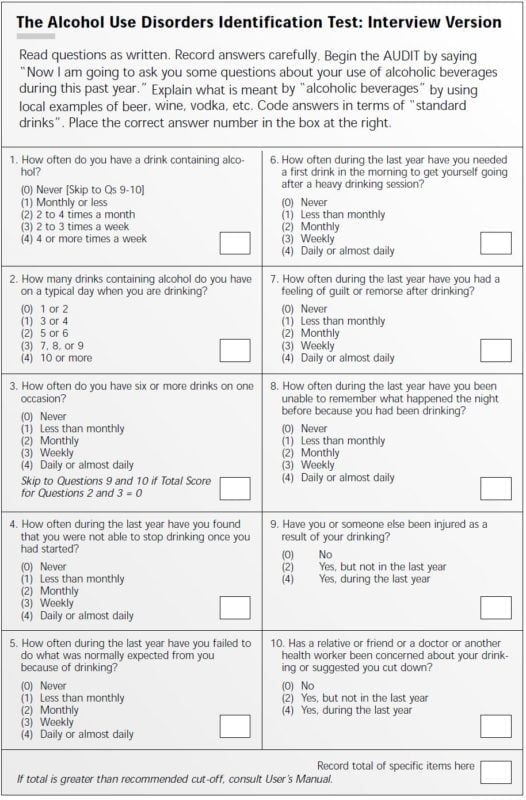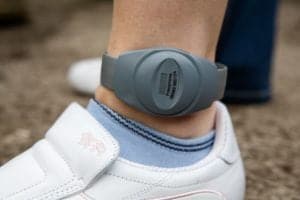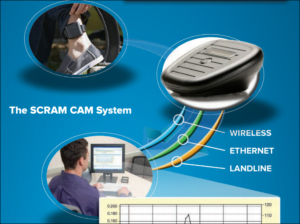Alcohol Abstinence Monitoring Requirement
Yesterday (19 May 2020) new legislation came into force which means that people who commit commit alcohol-fuelled crime may be banned from drinking and made to wear “sobriety tags”.
The ankle tags, which are to be rolled out across England and Wales, perform around-the-clock monitoring of an offender’s sweat to determine whether alcohol has been consumed. If they drink – breaching their alcohol abstinence order – they can be returned to court for further sanctions. These might range from a fine, extending the length of the order or in some cases imprisonment.
It follows two pilots, one across Humberside, Lincolnshire and North Yorkshire, and another in London, which showed offenders were alcohol free on 97% of the days monitored. Some wearers also reported a positive impact on their lives, wellbeing and behaviour.
Courts will be able to order offenders to wear a tag for up to 120 days. The MoJ says that the community sentence is designed to both punish offenders and aid their rehabilitation by forcing them to address the causes of their behaviour – in turn helping to reduce alcohol-related harm.
A national rollout will commence in winter this year.
How the tags work
The technology works by fitting a tag around the ankle of an offender. This then samples their sweat every half-hour to determine whether alcohol has been consumed. They can distinguish between alcohol-based products, such as hand sanitiser, that could be used to mask alcohol consumption and can detect when contact between the skin and the tag has been blocked.
Eligibility
The two main criteria for being fitted with a “sobriety tag”, more properly known as an Alcohol Abstinence Monitoring Requirement attached to a community sentence are that an individual:
- Has committed an offence for which consumption of alcohol was a contributing factor AND
- Is not dependent on alcohol (defined by scoring less than 20 on the Alcohol Use Disorders Identification Test – AUDIT is a 10-item screening tool developed by the World Health Organisation).
Dependent alcohol users are excluded because rapid enforced sobriety would be medically dangerous.
Conclusion
Initial findings seem to confirm that most offenders required to wear the tags comply with them. However, the two pilots ran rather differently with those placed on AAMRs in London receiving little input from probation or alcohol specialist staff in terms of how they could benefit from a period of enforced abstinence. The pilot in Humberside was run differently and was designed to provide rehabilitation agencies to work with people placed on the tag and get them to recognise and change their behaviour.
I am not aware of any published research which examines the reoffending outcomes of this initiative although the Humberside Pilot is still being evaluated.
It will be interesting to see the extent to which Magistrates use the option of imposing AAMRs once they are rolled out across the country.






3 Responses
As initiatives go, this particular measure will have a truly beneficial impact for those deemed to be either ‘alcohol dependent or are able to demonstrate that alcohol, is shown to be a mitigating factor in an individual’s antecedence.
As crucially, for the families that have to live with this predicament, such a positive step can help alleviate the harm otherwise caused both mentally and more essentially, when the physical violence stops, to a less toxic environment for all concerned.
The courts, inadvertently, when recovering costs, merely add to an individual’s financial woes and indeed exasperate a families ability to address fiscal concerns all the more, should an individual be imprisoned. Therefore to my mind, the constructive use of technology to better monitor an individual’s progress should be embraced, for far more benefits can be attained in such instances than as not.
I worked as a SPOC in the London pilot! A 96-98% success rate in terms of completions. Such a good piece of technology which worked really well when managed correctly. There are so many cases that come through the system which I keep thinking now that it would be a great punishment option. Really looking forward to their return although may be a while. Really hope to be involved with them again.
of course to add they were not used with those who alcohol dependant – mainly binge drinkers. However, its use on a few Service Users did flag up with a few that their alcohol use was problematic and prompted them to seek additional assistance from partnership agencies – which can only be a good team.